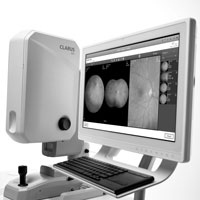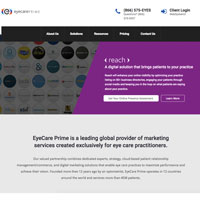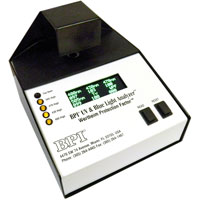
|
EXAMS / DISPENSING
Zeiss Unveils Ultra-Widefield Fundus Imaging Technology in U.S.
Product: Clarus 500
Top Line: At last week’s International Vision Expo West in Las Vegas, Nevada, Zeiss unveiled the Clarus 500, a next generation, ultra-widefield fundus imaging system that aids ocular disease detection with exceptional true color imaging clarity from the macula to periphery, according to Zeiss.
Close Up: Leveraging Zeiss precision optics, Clarus 500 is the first fundus camera that combines true color with high-resolution clarity down to 7 microns in an ultra-widefield view from the macula to the far periphery. Early signs of eye disease can often be subtle and can occur in the far periphery of the retina. Now with Zeiss Clarus 500 Ultra-widefield system, practitioners can obtain a better view of the entire fundus. The system produces exceptional images in true color that closely resemble the coloration of the retina as seen through direct observation during clinical examination, Zeiss said.
According to retinal specialist, Roger Goldberg MD, MBA with Bay Area Retina Associates, Clarus 500 from Zeiss combines the benefits of an ultra-widefield view across the entire retina with the high-quality of traditional fundus photography used for imaging the optic nerve and macula. "By offering true-color, high-resolution images of the optic nerve and macula, as well as the retinal periphery, we no longer have to choose which system to image a patient on based on their retinal pathology," Dr. Goldberg said.
Another advantage of the Clarus 500 is its ability for peripheral imaging while still maintaining the ability to zoom into the retina without losing resolution. Reticula degeneration in the periphery is a risk factor for AMD progression.
Vital Stats: With a single capture, Zeiss Clarus 500 produces a 133-degree HD widefield image. HD widefield images are automatically merged to achieve a 200-degree ultra-wide field of view. The technology allows clinicians to easily review and compare high-quality images captured during a single exam while providing annotation and caliper measurement tools that allow in-depth analysis of eye health. Clarus integrates with Zeiss Forum and Retina Workplace for review with other ophthalmic images and exam data for efficient multi-modality analysis.
Zeiss Clarus 500 Ultra-widefield is available in the U.S. beginning in September 2017. Availability is pending in all other major markets.
www.zeiss.com/us/clarus
WEB TECH
EyeCare Prime’s LensFerry Now Offers EHR Integration
Product: LensFerry EHR Integration
Top Line: EyeCare Prime announced that its LensFerry solution now integrates with electronic health record (EHR) systems utilized by eyecare practitioners.
The move is intended to simplify patient contact lens ordering and empower practices to retain more contact lens sales, according to CooperVision.
Close Up: LensFerry allows wearers to order their prescribed contact lenses from anywhere at anytime, including text-to-order, subscriptions, an online practice portal, and other selling tools. The EHR integration enables contact lens prescription and ordering information to automatically sync between systems, streamlining the ordering process for both patients and practices.
“The new data sync functionality saves staff a significant amount of time, making LensFerry easier to use than ever before,” said Mark Lindsey, global general manager, EyeCare Prime. “LensFerry provides practices with automatic multi-channel selling capabilities so practices can drive lens sales even when their store isn’t open for business. Patients can order their contact lenses directly from their eyecare practice with just a few clicks—any time of day, any day of the week—and the lenses are delivered right to their homes.”
Vital Stats: With LensFerry, patients can quickly and conveniently order replacement contact lenses from any major manufacturer, and the prescribing practice receives the sales revenue as if the lenses had been ordered in-office. Patients are able to purchase lenses 24/7 by texting “order” or visiting their doctor’s custom-branded portal. The integration between LensFerry and practice management systems enables the patient’s prescription information to automatically pre-populate, making the checkout process simpler than many other retailers. Patients can also receive intelligent reminders based on purchases at the time of their exam including a “Win Back” campaign targeting patients who leave the office without purchasing anything. Subscriptions are also available for patients who want to pay monthly for their lenses, and receive automatic deliveries directly to their homes.
http://eyecareprime.com/home/
TOOLS / SUPPLIES
BPI Latest Meter Simplifies Comparison of Lens Filters
Product: The BPI UV and Blue Light Analyzer with the Wertheim Protection Factor
Top Line: The BPI UV and Blue Light Analyzer displays values for violet/blue transmission at 400nm, 430nm, 470nm and 505nm as well as the luminous transmittance for the lens and the Wertheim Protection Factor, which characterizes the protection afforded by a filter to the eye from incident visible light. The light sources for the meter are LEDs with the center wavelengths given above; each has a spectral full width at half maximum of about 30nm.
Close Up: This small meter (6.5” x 7.0” x 6.0” high) calibrates itself with the touch of a button and then reads the characteristics of the lens or filter which has been placed in its light path. The bright OLED display provides the information while a series of caution LEDs show which wavelengths are not well blocked.
Vital Stats: Dr. H. Wertheim, Dr. P. Bartick and Dr. W. Moore developed the Wertheim Protection Factor to allow selection of filters that would better protect the eye. The Wertheim Protection Factor is high when a lens or filter combines good violet/blue light blocking with good sight. This is why it is a useful figure when comparing lens filters.
www.callbpi.com; (800) 225-5274; (305) 264-4465
|
|
VMail Technology is a service of Jobson Medical Information LLC, the publisher of VisionMonday®,
440 Ninth Ave, 14th Floor, New York NY 10001.
If you do not wish to receive future VMail Technology e-mails, please click UNSUBSCRIBE.
© 2024 Jobson Medical Information LLC All Rights Reserved EyesWay content is developed, sourced and
reported by the editors of EyesWay, the international news portal. VMail provides that content to its
subscribers as part of an exclusive news exchange agreement.
|




